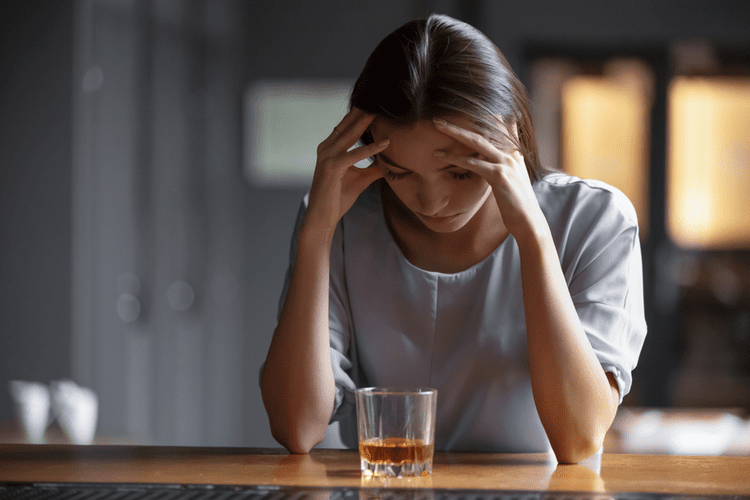Content
It can change through exposure to drugs, sure, but it is also rewired constantly with new experiences (and the stoppage of drug taking). We are complex beings, and if there were a simple cure for addiction, we’d no longer have people struggling with it. Jeffrey Borenstein, M.D., serves as the President & CEO of the Brain & Behavior Research Foundation, the largest private funder of mental health research grants. Dr. Borenstein developed the Emmy-nominated public television program “Healthy Minds,” and serves as host and executive producer of the series. The program, broadcast nationwide, is available online, and focuses on topics in psychiatry in order to educate the public, reduce stigma and offer a message of hope. Dr. Borenstein also serves as Editor-in-Chief of Psychiatric News, the newspaper of the American Psychiatric Association.

It may also be that certain foods (e.g., highly caloric, “hyper-palatable” processed foods) may possess greater addictive potential than do other foods and thus may warrant increased attention from public health and policy perspectives [31]. With respect to adolescents, limiting fast food and sugared sodas (e.g., in school cafeterias and vending machines) warrant consideration. Similarly, policy efforts could restrict the availability of substances with addictive potential that might lead to greater adolescent initiation or use (“bidis” or flavored cigarettes and alcohol-containing caffeinated beverages).
Support Our Mission
Thus, the requirement that addiction be detectable with a brain scan in order to be classified as a disease does not recognize the role of neuroimaging in the clinic. Present-day criticism directed at the conceptualization of addiction as a brain disease is of a very different nature. It originates from within the scientific community itself, and asserts that this conceptualization is neither supported by data, nor helpful for people with substance use problems [4,5,6,7,8]. Addressing these critiques requires a very different perspective, and is the objective of our paper.
What is biopsychosocial model example?
Biopsychosocial Breakdown in Terms
The 'bio' component of this theory examines aspects of biology that influence health. These might include things like brain changes, genetics, or functioning of major body organs, such as the liver, the kidneys, or even the motor system.
The more we know about the biopsychosocial model, the more we can foster accurate empathy for those with addiction and work toward effective treatment and prevention efforts. In this article, we provide a narrative review of current biological models for addictions with a goal of placing existing data and theories within a translational and developmental framework targeting the advancement of prevention, treatment, and policy strategies. One important approach that has been employed for the past decade involves the study of intermediary phenotypes or endophenotypes [146].
How Does Biology Affect Your Risk of Addiction?
Specific groups of individuals (e.g., adolescents who demonstrate greater choice impulsivity as evidenced by steeper discounting) may respond preferentially to different interventions like contingency management [170, 183]. Additionally, medications and behavioral treatments that target cognitive enhancement may help improve decision-making and behavioral control in addictions, and these may sober house operate by influencing the brain circuits underlying impulse control [3, 184, 185]. Fourth, impulsivity represents only one of multiple potential endophenotypes relevant to addictions. Other constructs (e.g., compulsivity, emotional reactivity, stress responsiveness) represent other potential endophenotypes that warrant consideration in understanding the biologies of addictions [2, 63].
- Meanwhile, however, genome-wide association studies in addiction have already provided important information.
- However, it is also necessary to admit that genetic and biological models have certain differences which make some people believe in the power of one theory only.
- This article will provide an overview of the biological model of addiction, looking at the key elements and how they interact to create an addictive cycle.
- As an extensive review of each of these models is beyond the scope of this manuscript, interested readers are directed to the references cited for additional aspects of each model.
An individual’s stress hormones (cortisol and adrenaline) are chronically elevated (Burke Harris, 2018; van der Kolk, 2014). The prominent belief several decades ago was that addiction resulted from bad choices stemming from a morally weak person. In fact, in 1956, the American Medical Association declared alcoholism a disease that should be addressed with medical and psychological approaches (Mann et al., 2000). Third, impulsivity, and facets thereof, appear to follow developmental trajectories that are important to consider [173]. For example, while self-reported impulsivity has been reported to decrease in a linear fashion from adolescence to adulthood, sensation-seeking appears to follow a curvi-linear pattern, increasing during early adolescence and decreasing thereafter [174]. Individual differences in impulsivity appear important to substance use behavior; for example, during late adolescence/early adulthood (ages years), groups showing the greatest decreases in impulsivity demonstrated accelerated decreases in alcohol involvement [175].
Recovery Coaching
This chemical interaction can further tie in our minds the concepts of drug or alcohol consumption and the sensation of satisfaction or relief. NIH is launching a new nationwide study to learn more about how teen brains are altered by alcohol, tobacco, marijuana, and other drugs. Researchers will use brain scans and other tools to assess more than 10,000 youth over a 10-year span. The study will track the links between substance use and brain changes, academic achievement, IQ, thinking skills, and mental health over time. They’ve shown that addiction is a long-lasting and complex brain disease, and that current treatments can help people control their addictions. But even for those who’ve successfully quit, there’s always a risk of the addiction returning, which is called relapse.

In most cases, these feelings of pleasure are caused by the release of certain chemicals in the brain. These chemicals reward the individual, making them repeat the behaviors that produce those feelings (like eating and drinking). The genetic model has almost the same characteristics; still, it also shows that the evaluation of some environmental factors may be an integral step. In spite of the fact that some people still believe that it is difficult to discover the ways of how natural addiction may be controlled by a human, some genetic theorist continue making the attempts and identifying the methods with the help of which addiction becomes less harmful for a person.
Related post: Artane